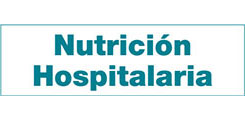Trabajo Original
Higher carbohydrate quality index is associated with better adequate micronutrient consumption in Brazilian women
Leandro Teixeira Cacau, Helena Alves de Carvalho Sampaio, Antônio Augusto Ferreira Carioca, Ilana Nogueira Bezerra, Luis Gonzaga Porto Pinheiro, Paulo Henrique Diógenes Vasques, Daianne Cristina Rocha, Ayana Florencio Meneses, Ana Luiza de Rezende Ferreira Mendes
 Número de descargas:
14053
Número de descargas:
14053
 Número de visitas:
4036
Número de visitas:
4036
 Citas:
0
Citas:
0
Compártelo:
Introduction: inadequate consumption of micronutrients is an emerging public health problem that can compromise health. Objectives: to assess whether the quality of dietary carbohydrates is associated with the consumption of 13 micronutrients in a sample of women monitored by the Brazilian Unified Health System. Methods: this cross-sectional study included 648 women monitored by the Brazilian Unified Health System. The association between quality of dietary carbohydrates and adequacy of consumption of 13 micronutrients was investigated using logistic regression models adjusted for potential confounding variables. Results: the consumption of micronutrients increased as the quality of carbohydrates improved. The micronutrients with the highest prevalence of inadequate intake were vitamin A, magnesium, manganese, and thiamine. After adjustments using logistic regression models, women in the third tertile of the carbohydrate quality index were less likely to have an inadequate consumption of magnesium (odds ratio (OR), 0.29; 95 % confidence interval (CI), 0.14-0.59), manganese (OR, 0.32; 95% CI, 0.21-0.49), and copper (OR, 0.22; 95% CI, 0.12-0.37). Conclusions: intake of a higher quality of dietary carbohydrates is associated with improved adequacy in consumption of most micronutrients in women monitored by the Brazilian Unified Health System, especially magnesium, manganese, and copper, after adjustment using regression models.
Palabras Clave: Carbohydrate quality. Micronutrient consumption adequacy. Food consumption. Women's health.
DOI: 10.1017/S0029665113000013
DOI: 10.1016/j.rpped.2015.03.002
DOI: 10.1590/s01518-8787.2016050006698
DOI: 10.1590/S0034-89102013000700004
DOI: 10.1007/BF03391600
DOI: 10.3390/nu4121958
DOI: 10.1017/S0954422407797846
DOI: 10.1111/j.1467-789X.2005.00196.x
DOI: 10.3390/nu12040985
DOI: 10.1017/S0007114513004364
DOI: 10.1016/j.nutres.2013.02.008
DOI: 10.3945/ajcn.111.015271
DOI: 10.1136/bmj.k2340
DOI: 10.1007/s00394-014-0828-3
DOI: 10.37111/braspenj.2019344001
DOI: 10.1002/1097-0215(200002)9999:9999<::AID-IJC1041>3.0.CO;2-#
DOI: 10.1016/S0959-8049(00)00022-8
DOI: 10.1093/ajcn/81.5.1232
DOI: 10.1093/ajcn/81.5.1188
DOI: 10.3945/jn.110.123356
DOI: 10.1017/S0007114516004633
DOI: 10.1017/S1368980013003005
DOI: 10.1017/S1368980011000760
DOI: 10.1017/S0007114509990547
DOI: 10.3390/nu11123046
DOI: 10.1016/S0140-6736(18)31809-9
DOI: 10.1016/j.nutres.2017.10.015
DOI: 10.1007/s00394-018-1801-3
DOI: 10.1093/cdn/nzz126
DOI: 10.1186/s12986-020-0428-6
Artículos Relacionados:
Trabajo Original: A pilot intervention to reduce postpartum weight retention at primary health care in Brazil
Karina dos Santos , Paulla Tavares Patrício , Thaíssa Santana Vieira Lima , Denise Cavalcante de Barros , Cláudia Saunders
Trabajo Original: The consumption of low glycemic meals reduces abdominal obesity in subjects with excess body weight
Trabajo Original: Los países mediterráneos ante la dieta mediterránea, ¿seguimos en el buen camino? El ejemplo de las mujeres de mediana edad del sur de España
Revisión: Bebidas de soja y salud femenina. Revisión de la evidencia y opinión de expertos
René Bailón-Uriza , José Antonio Ayala-Méndez , Cuauhtémoc Celis-González , Jesús Chávez-Brambila , Imelda Hernández Marín , Juan de Dios Maldonado-Alvarado , Javier Montoya-Cossío , Fernanda Molina-Segui , Abraham May-Hau , Pilar Riobó Serván , Eduardo Neri-Ruz , Antonio Peralta-Sánchez , Eduardo Reyes , Roger Rosado-López , Martin Tulio Santa Rita-Escamilla , Gilberto Tena Alavez , Hugo Laviada Molina
Artículos más populares
Revisión: Inteligencia artificial generativa ChatGPT en nutrición clínica: avances y desafíos
ChatGPT y otras herramientas de inteligencia artif...
Revisión: Suplementación con micronutrientes y sus beneficios: ¿por qué y cuándo?
Introducción: los micronutrientes participan en la...
-
Licencia creative commons: Open Access bajo la licencia Creative Commons 4.0 CC BY-NC-SA
https://creativecommons.org/licenses/by-nc-sa/4.0/legalcode




